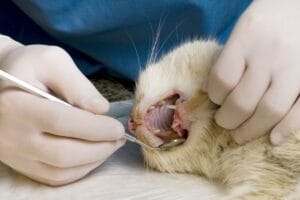How to Heal an Open Wound on a Cat
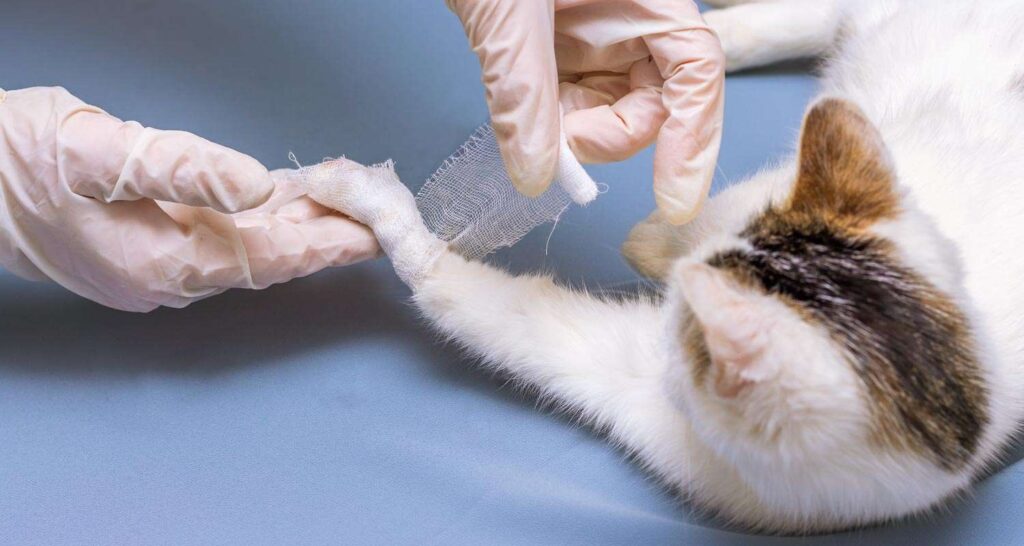
Do you want to know how to heal an open wound on a cat?
Cats, being naturally curious and agile creatures, are prone to injuries resulting from their explorations and encounters. Whether they engage in territorial disputes with other animals, get entangled in bushes or thorny plants, or simply find themselves in the midst of misadventures, cats can sustain wounds that require attention and care.
When a cat experiences an open wound, it becomes crucial for their owners to take prompt action in order to prevent infections and aid in the healing process.
In this article, we’ll discuss the different types of cat wounds and what you can do to heal an open wound on a cat.
Types of Cat Wounds:
Cats can sustain different types of wounds, each requiring specific attention and care. Understanding these various types of wounds can help cat owners better assess and respond to their feline companion’s injuries:
- Cuts: Cuts are one of the most common types of wounds in cats. They can occur due to sharp objects, such as broken glass or metal edges. Cuts may vary in severity, ranging from superficial scratches that only affect the top layer of the skin to deeper lacerations that may require stitches or veterinary intervention.
- Punctures: Puncture wounds are typically deeper and narrower compared to cuts. They occur when a sharp object, such as a bite from another animal or a puncture from a needle or stick, penetrates the skin. Puncture wounds are prone to infection as the narrow opening can trap bacteria inside, making them potentially more serious than they appear.
- Bites: Cat bites can result from territorial disputes or fights with other animals. Bites are particularly concerning because cats have sharp teeth that can introduce bacteria deep into the tissue, increasing the risk of infection. Even seemingly minor bite wounds should be carefully evaluated and treated promptly to prevent complications.
Regardless of the type of wound, it is important to take immediate action. Begin by gently assessing the injury and determining its severity. For minor cuts and superficial wounds, clean the area with warm water or a mild antiseptic solution. Apply an antibacterial ointment and cover the wound with a clean bandage or dressing. Regularly monitor the wound for signs of infection or worsening condition.
In more severe cases or if the wound does not show signs of improvement, it is essential to seek veterinary care. Deep wounds, extensive bleeding, signs of infection, or wounds in sensitive areas like the eyes or genitals require professional attention to ensure proper healing and prevent further complications.
Remember, the health and well-being of your cat should always be a top priority, and seeking veterinary advice is crucial when it comes to serious injuries or if you are unsure about the best course of action.
Cat Wound Care Supplies to Keep on Hand:
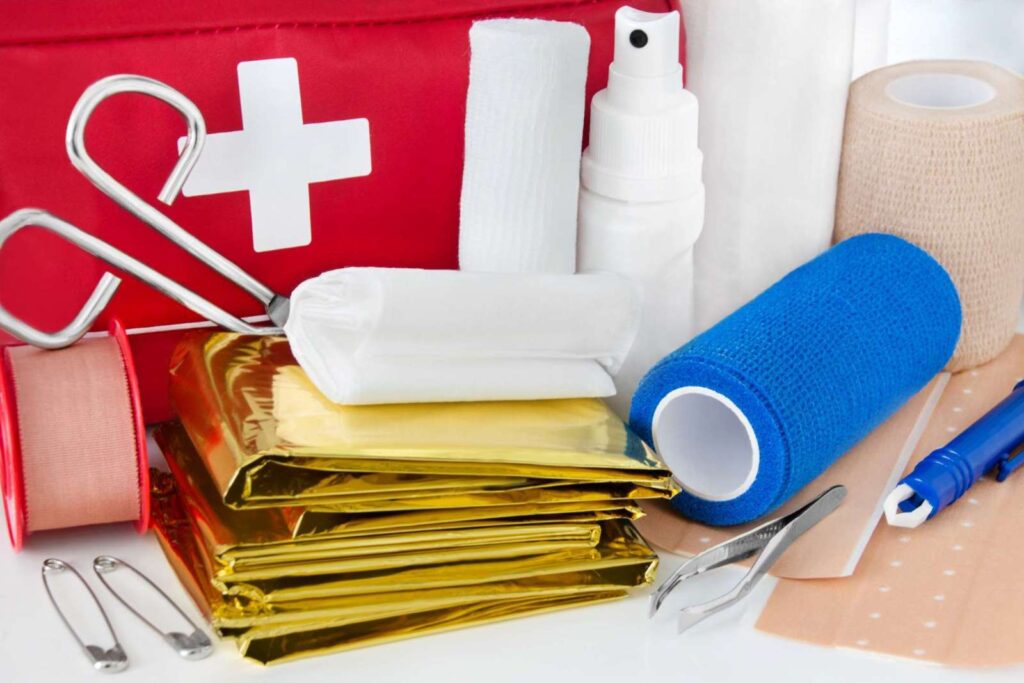
When it comes to cat wound care, having the necessary supplies readily available is crucial for prompt and effective treatment. As a responsible cat owner, here are some supplies you should keep on hand:
1- Antiseptic solution: An antiseptic solution such as hydrogen peroxide or saline can be used to clean the wound and prevent infection. Ensure you follow proper dilution instructions and use it as directed.
2- Clean cloths: Soft and clean cloths or gauze pads are essential for gently cleaning the wound or applying medication. These will help keep the area clean and free from debris.
3. Bandages or wraps: Non-stick sterile bandages or wraps can be used to cover and protect the wound. They help keep the area clean, prevent further damage, and provide a barrier against bacteria.
4. Elizabethan collar or cone: An Elizabethan collar or cone is essential to prevent your cat from licking or scratching the wound. It helps ensure that the wound remains undisturbed, allowing for proper healing.
5. Comfortable bed: Providing a comfortable and clean bed for your cat during the recovery period is important. Choose a soft and cozy bed where they can rest and heal comfortably.
6. Treats: Treats can be useful for providing positive reinforcement during wound care procedures. They can help distract and reward your cat, making the experience more pleasant for them.
7. Scratching post or other toys: While not directly related to wound care, having a scratching post or other toys can help redirect your cat’s attention and prevent them from engaging in activities that may aggravate their wound.
By keeping these essential supplies on hand, you can be better prepared to provide immediate care and ensure your cat’s well-being in case of any wounds or emergencies. Remember, if the wound is severe or shows no signs of improvement, it is always recommended to seek veterinary assistance for proper evaluation and treatment.
Treating Cat Wounds:
When it comes to treating cat wounds, it’s essential to follow the right steps to ensure proper healing. By following these steps, you can effectively address an open wound on your cat and promote their recovery.
Step 1: Secure Your Pet
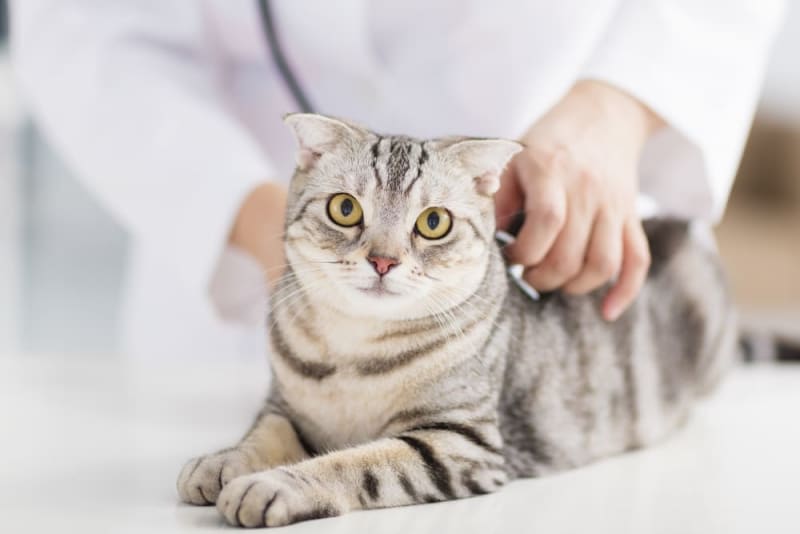
When it comes to healing an open wound on your cat, the first step is to ensure their safety and prevent further injury. Even the most gentle cats can react unpredictably when in pain or discomfort, potentially scratching or biting in self-defense. Therefore, it’s crucial to secure your cat before proceeding with any first aid.
To begin, it is recommended to enlist the help of another person for this step. Working together, gently wrap your cat in a towel, creating a snug but not restrictive hold. This will help immobilize your cat and provide a sense of security, reducing the chances of accidental harm during the wound care process.
In situations where you must handle the task alone, proceed with extra caution. Approach your cat calmly and avoid sudden movements that might startle or agitate them further. Consider using a towel or blanket to restrain your cat by gently wrapping it around them, taking care not to constrict their breathing or movement. Remember, the objective is to ensure your cat remains as calm and secure as possible throughout the process.
Securing your cat is an essential first step in the wound care process, as it creates a safer environment for both you and your feline companion. By taking precautions to prevent any potential accidents or injuries, you can proceed with greater confidence to provide the necessary care for their open wound.
Step 2: Examine the Wound
With your cat securely restrained, it’s time to carefully examine the wound. Take a closer look to assess the extent of the injury and determine the appropriate course of action. While some wounds may initially seem minor, it is crucial to thoroughly examine them, as appearances can be deceiving.
Observe the wound closely for any signs of infection, such as redness, swelling, or the presence of discharge. These indicators can signify an underlying issue that requires immediate veterinary attention. If you notice any unusual or concerning symptoms, it is best to err on the side of caution and seek professional care.
Remember that cats are adept at hiding pain and discomfort, so the true severity of the wound may not be immediately apparent. By carefully examining the wound, you can make a more accurate assessment of its condition and take appropriate measures to ensure your cat’s well-being.
If the wound appears to be more serious than initially presumed, it is always advisable to consult a veterinarian. They can provide a thorough evaluation, offer expert advice, and administer any necessary treatments to promote healing and prevent potential complications.
By diligently examining the wound and recognizing signs of infection, you can ensure that your cat receives the appropriate care and intervention needed for a successful recovery.
Step 3: Clean the Wound
After securing your cat and examining the wound, the next crucial step is to clean the open wound. Cleaning the wound properly helps reduce the risk of infection and promotes a healthy healing process.
Once the bleeding has stopped, it is important to clean the wound using an appropriate antiseptic solution. Opt for gentle options such as hydrogen peroxide or a saline solution, which can be readily obtained from a local pharmacy. Avoid using alcohol or vinegar, as they can cause pain and discomfort to your cat.
Take care to be gentle when cleaning the wound. Use a clean cloth or sterile gauze pad soaked in the antiseptic solution to gently rinse the wound site. Gently dab and wipe around the wound, ensuring that any debris or dirt is removed. This thorough cleaning helps eliminate bacteria and foreign particles that could lead to infection and hinder the healing process.
While cleaning the wound, observe your cat’s reaction and ensure they remain calm and comfortable. If your cat appears distressed or the wound is particularly deep or sensitive, it is advisable to seek veterinary assistance for professional wound cleaning.
By properly cleaning the wound, you are taking a vital step in preventing infection and setting the stage for effective healing. Remember to handle the cleaning process with care and prioritize your cat’s well-being throughout.
Step 4: Apply a Bandage (if necessary)
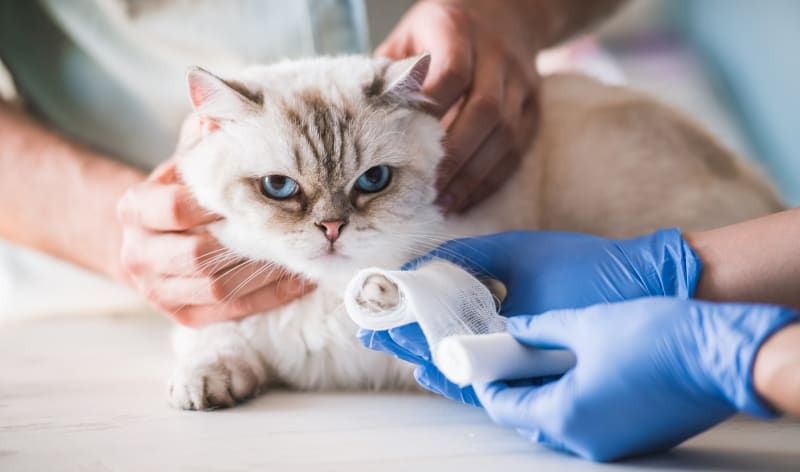
In some cases, a bandage may be necessary to protect the wound and promote healing. However, it’s important to note that minor wounds often heal best when they’re able to breathe. If you do need to apply a bandage, do so once the wound is clean. Apply a bandage or wrap in such a way that it protects the wound.
Make sure the wrap is loose enough so your cat can breathe, but tight enough to hold the dressing in place. You should also monitor your cat’s wound regularly and change the dressing as needed.
If you are not sure about how to apply the bandage, it’s best to let your veterinarian do it to ensure it’s applied properly and without causing any circulation problems.
By following these steps, you can heal an open wound on a cat properly and quickly. Just remember, if the wound appears to be more serious than you originally thought, or if your cat shows any signs of infection, it’s best to seek veterinary care.
What to Watch Out For:
Ensuring proper care and monitoring during the healing process is crucial when it comes to treating an open wound on your cat. By being aware of what to watch out for and taking appropriate measures, you can help facilitate your cat’s healing and overall well-being. Here are some important points to consider and actions to take to ensure a successful recovery for your pet:
- Signs of Infection: After applying the bandage, it’s important to monitor the wound for any signs of infection. Look for redness, swelling, or discharge around the wound area. If you notice any of these symptoms, it is crucial to seek veterinary attention promptly.
- Cat’s Behavior: Keep an eye on your cat’s behavior and look out for any changes. If your cat is constantly licking or scratching at the wound, it can delay the healing process and potentially introduce infection. Any unusual behavior, such as increased aggression, hiding, or reluctance to move, should be noted and addressed promptly.
- Elizabethan Collar or Cone: To prevent your cat from licking or scratching the wound, consider using an Elizabethan collar or cone. These devices create a physical barrier that restricts access to the wound, allowing it to heal undisturbed. Ensure that the collar or cone is properly fitted to your cat and does not cause discomfort.
- Comfortable Bed: Provide your cat with a comfortable bed where they can rest and recover. A soft and cozy bed helps keep them comfortable and minimizes the chances of accidental injury or aggravation to the wound. Keep the bed in a quiet and safe area, away from sharp objects or other potential hazards.
- Positive Reinforcement: Use positive reinforcement techniques to encourage desired behavior. Reward your cat with treats and praise when they use the litter box properly and refrain from licking or scratching the wound. This helps create positive associations and reinforces good habits during the healing process.
Remember to give your cat plenty of love and attention throughout their healing journey. Your care, reassurance, and support can contribute to their overall well-being and promote a smooth recovery.
Conclusion
In conclusion, when it comes to healing an open wound on your cat, it is crucial to act swiftly and provide the necessary care. By being vigilant for signs of infection, using positive reinforcement techniques, and having the right supplies readily available, you can play a significant role in helping your cat heal quickly and comfortably.
However, if you have any doubts or concerns about how to properly care for your cat’s wound, or if you notice that the wound isn’t healing as expected, it is always advisable to seek professional guidance from your veterinarian. They have the expertise and knowledge to assess the situation, provide appropriate treatment, and ensure the best possible outcome for your feline companion.


